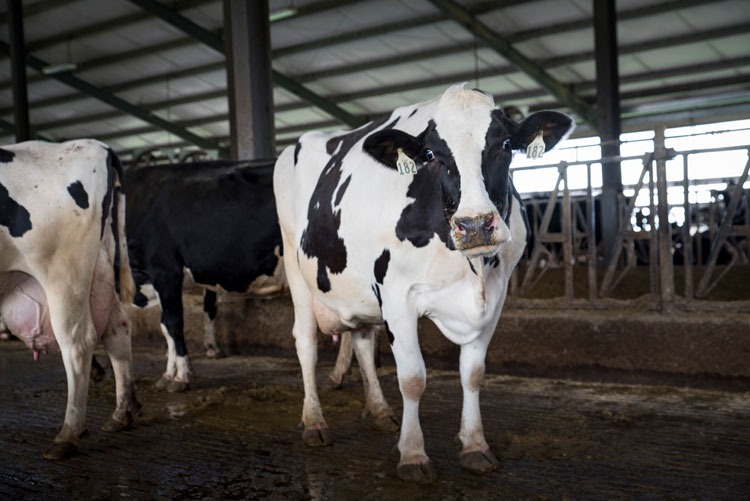As temperatures begin to rise, you know your cows are susceptible to heat stress. Even in relatively cool regions, heat stress can negatively affect cow comfort, health and performance. Understanding the visual signs of heat stress is the first step to developing strategies to help your cows cope with the heat.
Visual signs of heat stress
A cow’s tolerance to heat is much less than a human's. They start to experience heat stress when the temperature-humidity index (THI) surpasses 68 or at about 72°F.1
Dairy cows that are experiencing heat stress will:
- Show respiratory stress. Initially their respiration rate will increase and in extreme conditions, they will pant to release heat (vapor).
- Cows will spend less time laying down.2
- Appear droopy, weak and lethargic.
- Have reduced intake with a corresponding reduction in cud chewing.
The effects of unmanaged heat stress
Heat stress has both immediate and long-term effects on cow comfort, health and productivity. When a cow is heat-stressed, milk production will drop and can worsen if proper abatement strategies are not employed.
The long-term impact of heat stress is determined by the stage at which the cow was affected. If a cow has not reached peak milk performance, her peak milk performance potential will decline. If a cow is impacted by heat stress after her peak milk, her performance will immediately decline and never recover to her full milk potential. Additionally, recent research from the University of Florida has demonstrated that exposure to intrauterine heat stress during late gestation affects offspring performance into adulthood.3
Why does heat abatement matter?
Reduced feed intake, decreased milk production and compromised cow comfort and health all lead to a decrease in operational efficiency, which in turn, costs you money.
Proactive heat abatement strategies
When it comes to heat stress abatement, preparation is key. Here are four management strategies you can employ before the warm days arrive:
- Clean your fans – We understand, cleaning your fans is not fun, nor easy to do, but it is essential. Clean, properly mounted fans allow for maximum air movement to adequately cool your cows.
- Program your sprinklers and misters – Frequently apply small droplets of water to soak the cow, then stop to allow for evaporative cooling. This is the best use of water and reduces the risk of mastitis issues. As temperatures increase, apply water more often, not for a longer duration.
- Adjust your cows’ ration – Increasing the nutrient density of the ration is a great way to make up for the cow’s decrease in dry matter intake. You may also consider increasing fats in the diet because breaking down fatty acids produces fewer heat increments as compared to fiber and starch. However, be careful not to reduce forages to an extreme; instead, increase forage quality for more digestible nutrients per pound.
- Explore feed technologies – Incorporating proven feed technologies can positively impact cow comfort and productivity during a heat stress event.
Feeling stressed about heat stress? Contact your Purina representative or visit purinamills.com.
References
1 Heat Stress Abatement Techniques for Dairy Cattle. Penn State Extension. Nov. 2022. Available at: https://extension.psu.edu/heat-stress-abatement-techniques-for-dairy-cattle.
2 The Effectiveness of Heat Stress Abatement Systems on Behavior and Performance of Lactating Dairy Cows in NNY. Northern New York Agricultural Development Program 2016 Project Report. NNYADP16HeatStressCowsFinal (nnyagdev.org)
3 Skibiel, A. L., Peñagaricano, F., Amorín, R., Ahmed, B.M., Dahl, G.E., Laporta, J. In Utero Heat Stress Alters the Offspring Epigenome. National Library of Medicine. Oct. 2018. Available at: https://www.ncbi.nlm.nih.gov/pmc/articles/PMC6168509/
© 2023 Purina Animal Nutrition.

